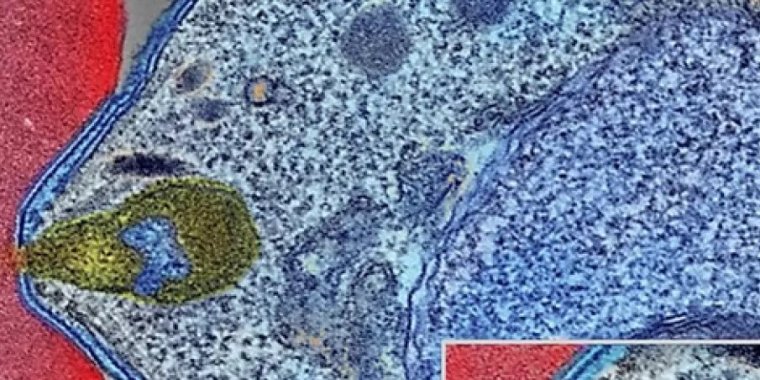| Health / Health News |
Biological clocks of people and malaria parasites tick in tune
Researchers looking for other ways to fight the mosquito-borne parasites have zeroed in on a potential new target: biological clocks.

Colorized electron micrograph showing malaria parasite (right, blue) attaching to a human red blood cell. Photo: NIAID
Most living things have internal clocks that govern fluctuations in everything from hunger and hormone levels to when genes are active throughout the day.
The team found that malaria parasites somehow sync their molecular rhythms with the internal 24-hour clocks of their hosts, their respective genes rising and falling in perfect lockstep with each other over the course of a day.
The team of researchers at Duke University, Florida Atlantic University and the Armed Forces Research Institute of Medical Sciences say the findings could pave the way to new anti-malarial drugs that throw malaria's internal clock out of step with its host, essentially "jet-lagging" the parasites.
When someone has malaria, a deadly loop repeats itself inside their body.
The disease’s recurring fever spikes are caused by microscopic Plasmodium parasites that invade the person's red blood cells, multiply and then burst out in unison, spewing into the bloodstream by the millions to invade other cells.
This cycle repeats itself every 24, 48 or 72 hours depending on the Plasmodium species.
The researchers identified hundreds of genes that follow a clock-like rhythm, ramping up at certain times of day and switching off at others.
For every turn of the parasite clock, the 24-hour body clock of their host went around twice.
The researchers are trying to figure out exactly how the parasite and human clocks "communicate" with each other so that their cycles line up. (U.S. National Science Foundation)
YOU MAY ALSO LIKE





